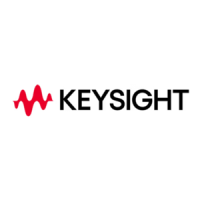In external (or pass-through) pattern mode, the following considerations
with respect to sampling mode and frequency should be taken into account:
If you can control the data rate of your external data pattern source,
use the 81150A / 81160A “Trigger Out” signal to drive the clock
input of your external pattern source. Set the 81150A / 81160A
frequency to the desired data rate and use “Fixed” sampling mode.
This gives you the greatest flexibility in creating ideal and distorted
signals. You can use NRZ with adjustable transition times or arbitrary
bitshapes and add AM or PM modulation to create jitter and noise on
the output signal.
If your external pattern source delivers a continuously running clock
signal together with the data signal and you want the 81150A /
81160A to follow exactly that external clock, then consider using
“Triggered” mode (with the external clock signal connected to
“External-In”) and “Fixed” sampling. If you use arbitrary bitshapes,
the 81150A / 81160A frequency setting determines the duration of a
bitshape. The bit rate is determined by the external clock. Modulation
is not available in this case.
If you cannot control the data rate of your external pattern source
and your pattern source does not deliver a continuously running
clock signal, set the 81150A / 81160A to “Continuous” Mode with
“Automatic” sampling. Set the 81150A / 81160A frequency
approximately to the data rate of your external pattern source. In
order for the 81150A / 81160A to correctly pass that pattern through,
it is necessary that the data pattern occasionally contains sequences
of 8 or more identical bits (or 8 or more unit intervals of electrical idle
in case of 3-level patterns). This allows the 81150A / 81160A to
adjust its sampling point. Sequences of identical bits might be
stretched or shortened depending on the relationship of pattern
frequency and 81150A / 81160A frequency, but bit sequences in
between idles are passed through correctly. This mode is intended
for packet-oriented serial data transmissions such as FlexRay or
CAN. You can use NRZ or arbitrary bitshapes as well as AM or PM
modulation in this case, but you have to be aware that there is no
fixed delay through the 81150A / 81160A in “Automatic” sampling
mode.
Depending on your application, you can choose the 81150A / 81160A
frequency to be significantly higher (e.g. 10 times) the data rate of
your external pattern signal. In this case, you have a sampling
uncertainty (e.g. 1/10 of a unit interval), but you have a reduced
delay and you can still adjust amplitude/offset of the re-generated
signal. Transition time adjustment or arbitrary bitshapes are limited
to one period of the 81150A / 81160A frequency (e.g. 1/10 of a unit
interval).

